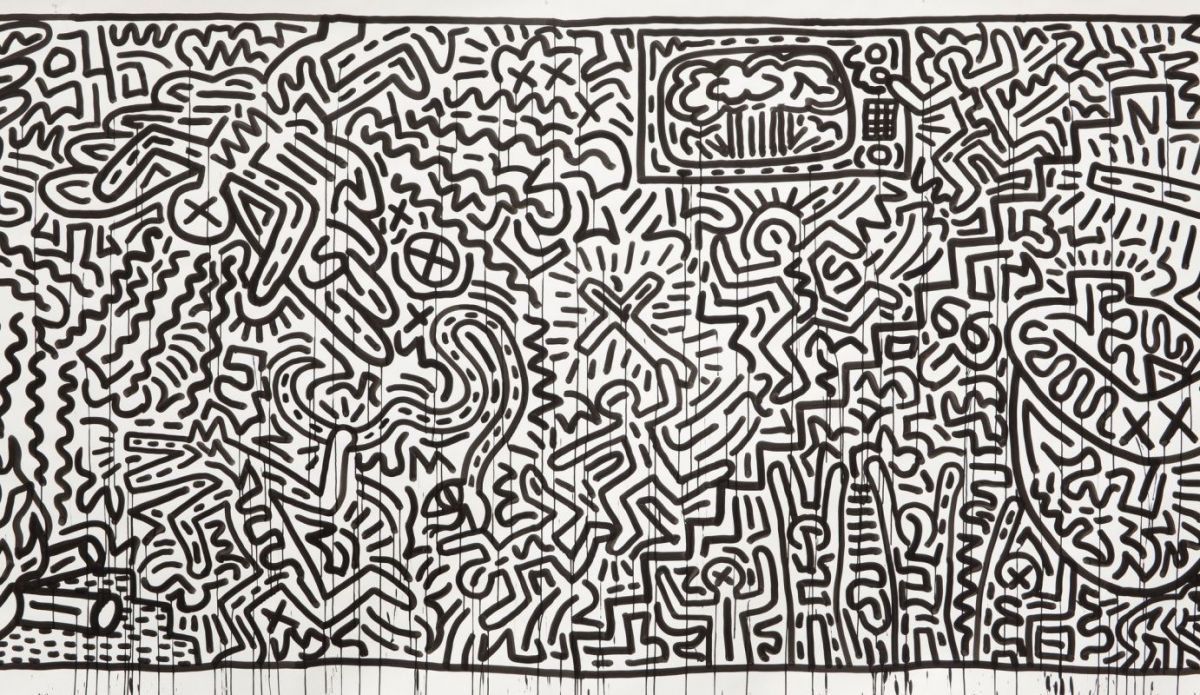Keith Haring: The Icon of Street Art and Social Activism

Keith Haring emerged in the early 1980s as a trailblazer in the art world, known for his vibrant, graffiti-inspired drawings that would become synonymous with New York City's street culture and the global language of contemporary art. Born on May 4, 1958, in Reading, Pennsylvania, Haring's work was heavily influenced by his love for drawing, a passion that developed during his childhood.
As a young adult, Haring moved to New York City, where he was drawn to the underground art scene and enrolled at the School of Visual Arts (SVA). Immersed in the explosive arts community of that era, he found friends among other soon-to-be icons, such as Jean-Michel Basquiat and Madonna. Haring was driven by an extraordinary sense of social activism that was reflected in his art, which tackled subjects like apartheid, the crack cocaine epidemic, and later, AIDS awareness, a cause that became increasingly personal to him.
Haring's signature style—composed of bold, fluid lines and bright colors—was one that could be understood by all, regardless of their background. This accessibility was no accident. He aimed to democratize art, to bring it out of galleries and museums and into the everyday experience of the city's community. In his own words, Haring wanted to “break down the barriers between high and low art” and make his work available to as broad an audience as possible.
Perhaps Haring's most recognized contributions were his spontaneous public works, notably his chalk drawings on the black unused advertising panels in the New York City subways. His "Radiant Baby" became one of his most iconic symbols, representing innocence, purity, and the potential for goodness within each person.
Haring's work often carried social messages, from his dynamic anti-drug pieces to the provocative “Silence=Death” images, which brought attention to the AIDS epidemic. As an openly gay man, Haring's art became intertwined with his advocacy, and he used it as a platform for activism, working tirelessly to destigmatize the conversation around AIDS.
The Pop Shop, Haring's store opened in 1986, exemplified his commitment to making his work accessible. It sold T-shirts, posters, and toys adorned with his designs, allowing those who might not normally set foot in an art gallery to own a piece of Haring's work and connect with the messages therein.
Throughout his career, Haring remained incredibly prolific until his untimely death on February 16, 1990, from AIDS-related complications, at the age of 31. In his short life, he achieved international fame and left behind a substantial body of work that continues to influence artists and inspire activists around the world.
Keith Haring's legacy is preserved by the Keith Haring Foundation, established before his death to provide funding and imagery to AIDS organizations and children's programs, and to expand the audience for his work through exhibitions, publications, and the licensing of his images. The Foundation maintains Haring's desire for his art to invoke change, support disenfranchised communities, and remain a beacon for social activism.
Today, Haring is celebrated not only as a prominent figure in the world of street art but also as a social force who illuminated critical issues through his art. The universal appeal of his work and the clarity of his socio-political messages continue to resonate, a testament to the power of art as a voice for change. In his iconic, energetic figures, we are reminded of the potential for art to engage, educate, and unite, blazing trails for generations of artists and activists that have followed in his path.
Теги
art.